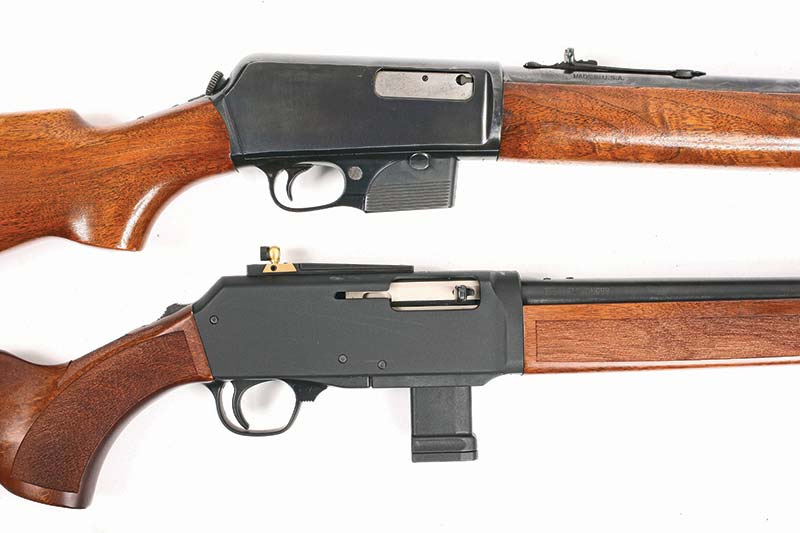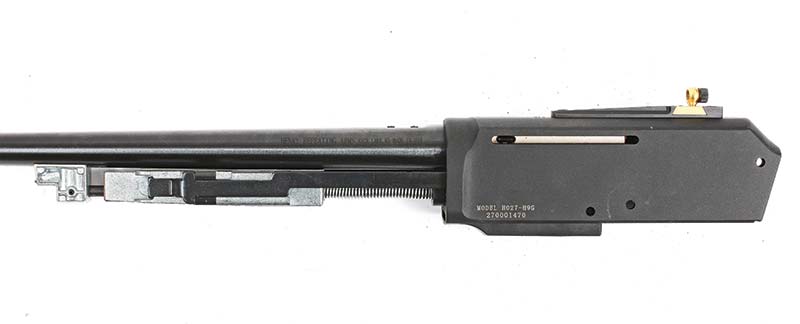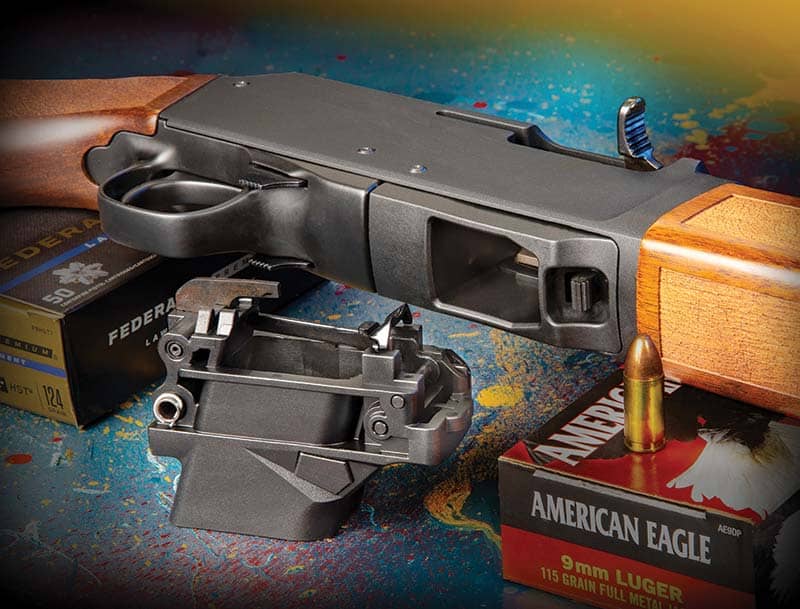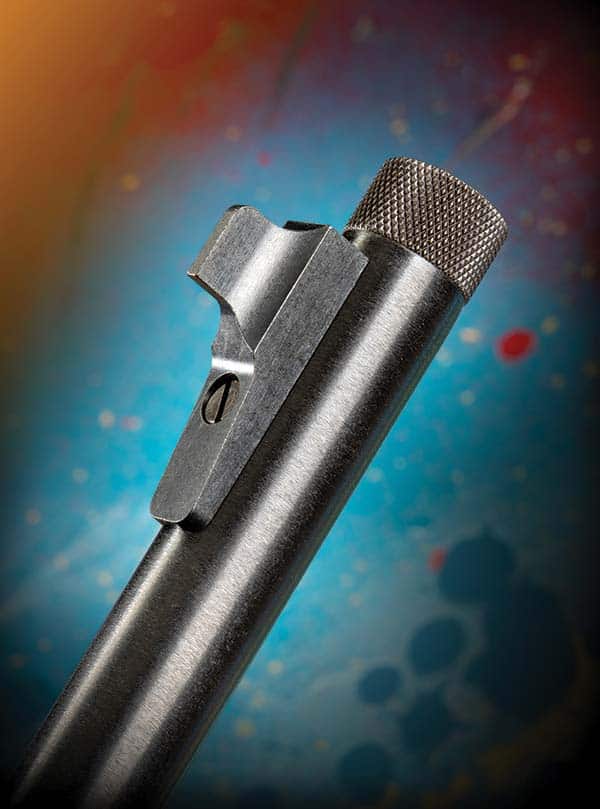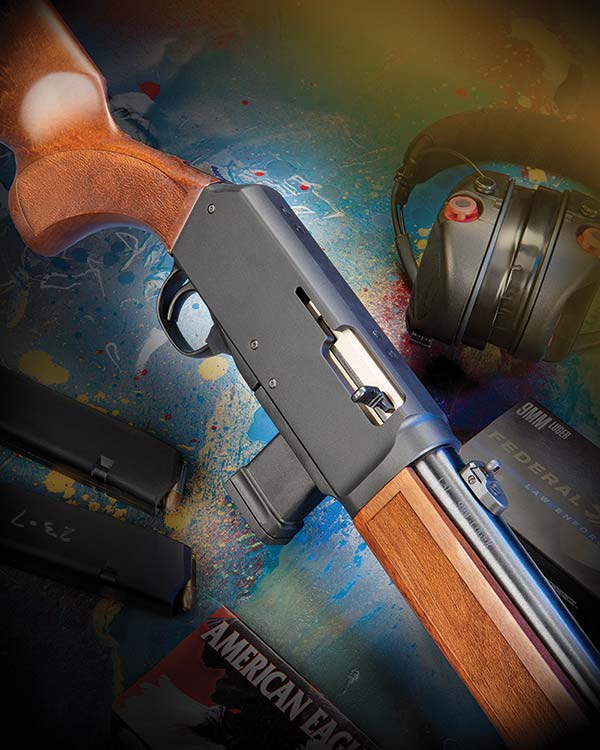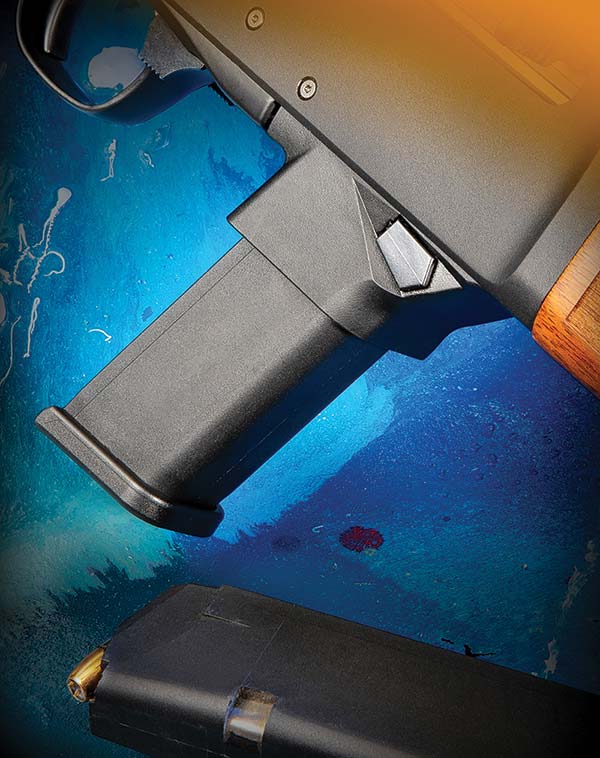Henry Homesteader
A Versatile Retro-Modern 9mm Carbine
I knew I was going to like Henry’s Homesteader Carbine the moment I laid eyes on her. It was all blued steel and walnut and looking dangerously like one of my all-time favorite rifles — the Winchester 1907 in .351. I have one and shoot it all the time. My heart was lost and I begged Henry to send me a Homesteader to try.
I was glad I did.
A History Lesson
The original 1907 aimed, I think, to sort-of replace the 1892/1873 lever action carbines. It was flat-sided and handy, pushing a 180-grain bullet at close to 1,900 fps, besting the levers. Law enforcement loved it and the design lived until the 1950s. It was even ordered by some countries during WWII. But the reasons making the ’07 useful are the exact reasons Henry’s Homesteader is appealing. Not to mention the Homesteader looks like a first cousin to the .351 just sweetens the pot.
Short, handy rifles of all sorts make perfect sense. Any pistol caliber carbine mostly serves as a more accurate way to deliver pistol ammo and you shouldn’t really think of them as “real rifles” at any level. The early Marlin Camp 9 and 45 carbines were popular but suffered from minor design glitches and tended to be on the frail side. Ruger’s PC9 pistol-caliber carbine leapt onto the scene later and soon took over that semi-auto pistol caliber market. Factor in the various AR-bases platforms and there is plenty of competition for the Homesteader.
But is there really? The Homesteader is not only appealing on a personal level, oozing tradition and down-home values, offering a family protection on the farm but it even gives a city dweller a first line of defense. But mostly, it does it with style and confidence. Tired of polymer and painted-on finishes? Henry has nailed a segment of the market that has been waiting for just this sort of thing.
Well Done.
The Raw Facts
If this sort of thing has your attention, the more you learn about it, the more you may like it. While the Homesteader comes with proprietary magazines (5- and 10-round for $35 and $36.95, respectively), the real hook is the ability to use GLOCK, SIG and S&W magazines by swapping mag wells. Mag well adaptors are about $30 and they are a cinch to change out. I used the stock mags and they both ran just fine.
At about 6.6 lbs., it’s not a featherweight but it’s also not a brick. It sits comfortably in your hand and has a natural grasping spot around the receiver. It comes with an aperture rear and post front sight and mine was sighted in nicely for 50 yards. It’s also drilled and tapped for a Weaver 63B base, but for the life of me I have no idea why you’d scope this rifle or even put a red dot on it. But do as you must if you insist.
The carbine is a tidy 36″ overall, with a comfortable 14″ length of pull. This leaves you some fudge room if you’re wearing a bulky coat. There’s a soft recoil pad and the American walnut stock has an interesting sort of “leather-like” texture on it in grasping places rather than checkering. It works and is eye-pleasing too. The top thumb safety is handy and makes it ambi with no fuss or parts-changing needed. There is a centrally located mag release just ahead of the mag and it’s naturally ambi too — smart thinking. There are two bolt hold-open levers just ahead of the trigger guard you push up to secure things. And yes, there’s the whole ambi thing going on again.
The barrel is genuine blued steel and all the working parts inside are steel where they should be steel. The receiver is enclosed by a hard anodized aluminum cover and the matte finish helps to hide finger smudges from carrying it there. The barrel length is right at 16.3″ — perfect — and even comes with stock with 1/2″ x 28″ threads for your favorite suppressor. How civilized is that?
An interesting feature is the counter-weight hidden under the fore stock. It rides along with the bolt to slow things down on this blow-back action. I was delighted to note this is virtually an identical set-up as on that classic 1907 .351, albeit not quite as heavy. Recoil is soft and frankly, virtually unnoticeable, even for the recoil-shy. It’s a very shooter-friendly carbine.
At an MSRP of about $959, it’s not a discount item, but then again, those few dollars more delivers American-made quality in steel and wood. Most AR-style carbines are similarly priced (or even more) but in the Henry you get traditional looks yet still enjoy modern performance — for similar prices.
Shooting
The trigger on our test sample broke at an average of about 6.5 lbs. and I’ll admit it has a bit of creep. This is clearly a field rifle, not one intended for gilt-edged accuracy of a bench some place so the trigger pull weight is appropriate. I did notice this one smoothed out a bit with use and I suspect it may smooth out even more as time goes by.
It’s been my experience 9mm carbines seem to be catch-as-catch-can regarding accuracy. I’ve had some AR-styles shoot more like shotguns, offering “patterns” rather than groups at 50-plus yards. Others seem to hold their own with close to 2″ or so at 50 and around 4″ or more (usually more) at 100. I did some study regarding rifling twist rates to try to get to the bottom of this. I found most use 1:10 to 1:15 or so and I think barrel quality and fitting has much to do with the accuracy of a particular gun. Interestingly enough, the Beretta M9 National Match pistols used at Camp Perry have 1:32 KKM or BarSto barrels and offer guilt-edged accuracy. There might be a lesson there.
The Homesteader comes with a 1:10 barrel showing sharp, bright rifling and a good muzzle crown. I ran 12 different 9mm loads through it, with the best going into about 1.5″ at 50 yards. Some hovered in the 2″ area but all shot as well as anyone would need. Over about 350 rounds, the rifle never bobbled once in spite of loads running from 50-grain bullets to 147-grain loads at wildly different velocities. The point of impact did change so you’d need to zero for your favorite load.
If I took out the two widest hits in some 50-yard 5-shot groups (we’ve found that matches a mechanical rest’s test results), the resulting trio of holes would often chase 1″. Black Hills HoneyBadger (a 125-grain fluted solid-copper design) was one of those the rifle particularly liked and from what I’ve learned would be a very effective defensive load.
I didn’t do any serious targeting at 100 yards simply because that’s not what this rifle is about, especially with irons. But a 6″ round steel plate I keep up at 100 yards was easy to hit once my eyes found it through the sights. The “Bang-Tink” sound was as reliable as an old Ford truck. Great fun, too, I’d like to add.
I also ran some velocity tests and found with some loads, the longer barrel delivered similar velocities as the 4″ 9mm auto test bed I was using to compare. I think that has to do with the efficient powder used in modern handgun loads.
Yet, with other loads — especially the lighter bullets — the longer Homesteader barrel paid dividends delivering 200 to 400 fps faster results over my chronograph. One, the unusual 50-grain “Civil Defense” load from Liberty zinged at 2,200 from the 4″ barrel and an eye-opening 2,616 fps from the Homesteader. You’d need to decide if the light bullet meets your own needs for a defensive load, but it’d sure close the book on any varmints!
Should You?
If you like a “real” gun made out of wood and steel, but taking advantage of modern design, manufacturing and new cartridge technology, I honestly can’t think of a better match for you. The Homesteader lived up to my expectations entirely. It proved reliable, accurate, handy, versatile and could easily be your “one gun” if needed. The explosion of higher performance 9mm loads today offers honest threat-management solutions, if you will. Yet you can still plink relatively cheaply if you like.
This is a long-gun friendly to new shooters, smaller-statured people, wives, husbands, kids, farmers, suburban dwellers or virtually anyone in need of protection — or a reliable working assistant.
Besides, it’s also just plain good fun.
Want To See More?
Watch Roy take some shots with the Henry Homesteader in the First Look video below.


